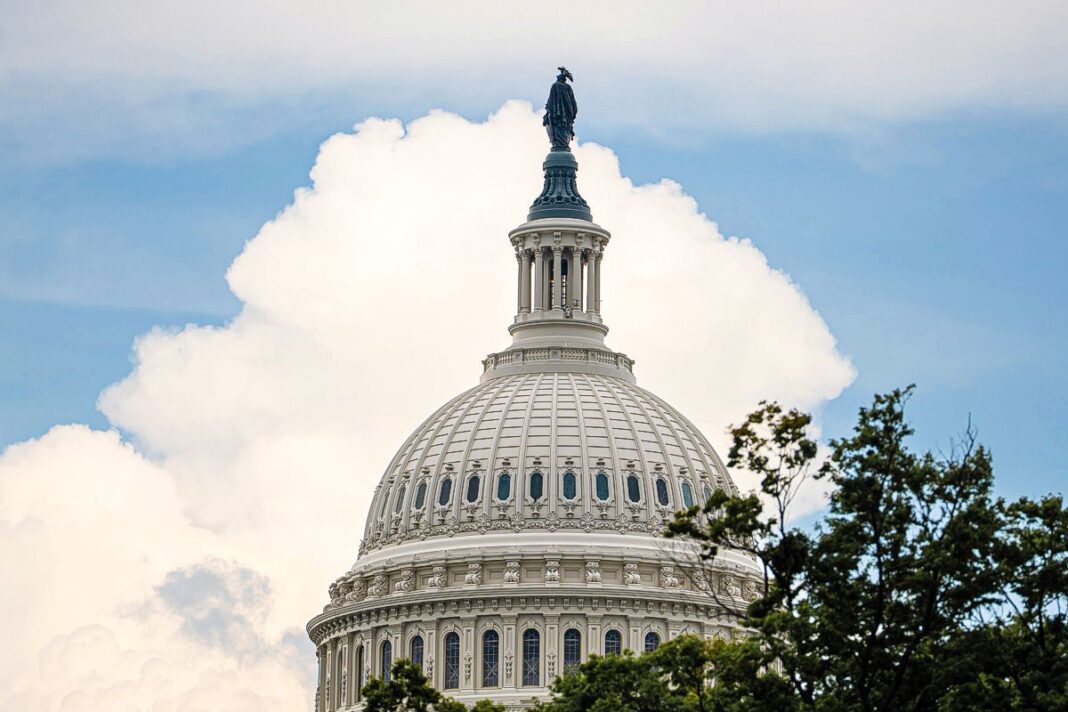The compromise deal is expected to put an end to the longest government shutdown in U.S. history.
The U.S. Senate is on the verge of overcoming a key procedural hurdle on a bill to end the government shutdown as the funding impasse nears its 41st day.
On Sunday evening, following an unusually busy weekend at the Capitol that saw bipartisan negotiations and all-nighters by legislative staff, enough Democrats had voted for the proposal to all but ensure that at least 60 senators will agree to invoke cloture on the funding bill.
Finalization of the procedural vote was slowed as Sen. John Cornyn (R-Texas) was not present as the vote sat at 59–40.
Hours after the vote began, Cornyn rushed to the Capitol from Dulles International Airport in Virginia, coming after a day of brutal flight delays nationwide as a consequence of the shutdown’s impacts on air traffic control. As Cornyn cast the 60th vote for the bill around 11 p.m. ET, cheers from other members in the chamber were audible.
The final tally was 60–40, achieving the bare minimum needed to break the filibuster.
A vote on final passage of the bill will still need to be held before the revised legislation can be sent to the House of Representatives for a vote.
One Republican, Sen. Rand Paul (R-Ky.), an outspoken budget hawk, voted against the package.
Seven Democrats have cast affirmative votes for the package, including Sens. Dick Durbin (D-Ill.), Tim Kaine (D-Va.), Jeanne Shaheen (D-N.H.), Catherine Cortez Masto (D-Nev.), Jacky Rosen (D-Nev.), Maggie Hassan (D-N.H.), and John Fetterman (D-Pa.).
Sen. Angus King (I-Vt.), who caucuses with Democrats, also voted for the package.
Though a funding bill was already passed by the House, the bill taken up by the Senate differs, and the House will need to take a separate vote on the issue before it can be sent to President Donald Trump’s desk.
The House has been out of session for weeks, and currently isn’t scheduled back until Nov. 17.
However, it’s likely that the House will return early this week to vote on any Senate-passed agreement and put an end to the shutdown.
The proposed stopgap funding agreement, led on the GOP side by Senate Appropriations Committee Chairwoman Susan Collins (R-Maine), resulted from days of backroom negotiations.
Shaheen, King, and Hassan led the opposition in the negotiations.
The multi-part deal includes the House-passed “clean” funding bill to punt government funding into January, a vote on a three-part appropriations package dubbed a “minibus,” and a promise from Thune that the Senate will take up a vote on extending Affordable Care Act (ACA) subsidies later this year.
The minibus appropriations bill wrapped into the package would greenlight full-year funding for three sectors of the government, ensuring that these sectors will maintain funding even if there’s another shutdown in 2026.
Speaking about the minibus on the Senate floor ahead of the vote, Collins encouraged passage of the agreement, noting that it came about in part because her staff “missed an entire night’s sleep to get this package together.”
The deal will put an end to the longest government shutdown in history, as disruptions to air traffic, social program payouts, and other government services increased pressure on both sides to find a way forward.
Previous attempts by Senate Republicans to reopen the government, tallying 14, had failed as Democrats continued to withhold their support for a measure to end the shutdown.
By Joseph Lord








